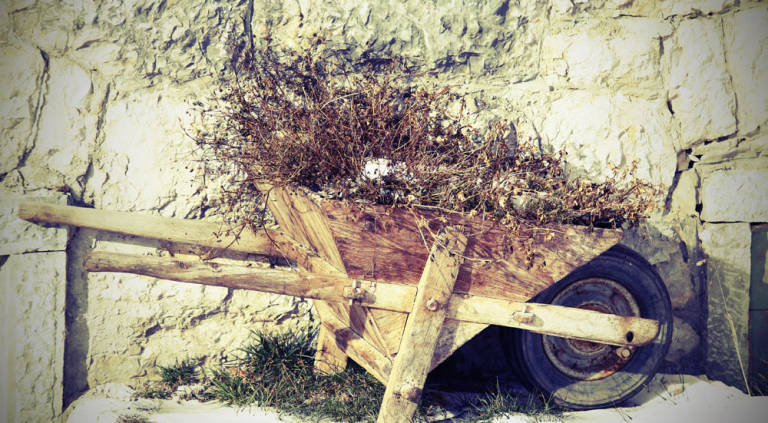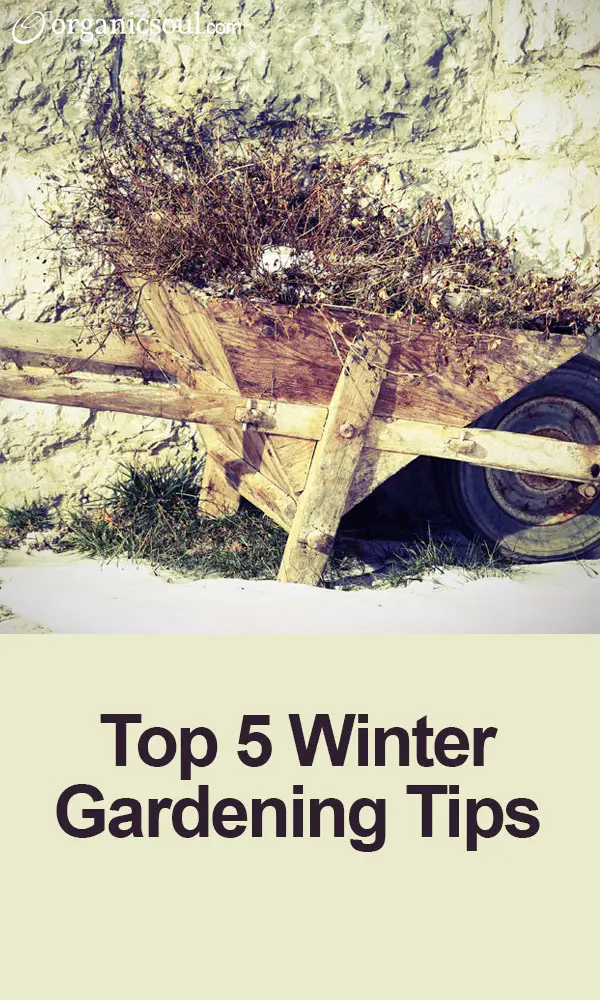
For most people, their garden never stops growing. Year round, there is always something to be done and the work is never quite finished. Winter, however, can be an especially tricky time of year, with frost to worry about as well as rummaging animals and tremendous storms. That said, it’s good to know a few tricks for the winter months!
Like Organic Soul on Facebook
#1 – When the Ground isn’t Frozen, Water
Remember, the air above the ground gets cooler quicker than the ground itself, which means you may still have time to water your plants and trees depending on where you live. If the ground is becoming solid, try watering with some lukewarm water to loosen it up. Whatever you can do to get water to those plants in the coming weeks will help! On the plus side, most plants won’t be using much water because they are dormant!
#2 – Plant in-Season
It’s always smart to know what works well in the winter seasons. Sometimes, I suggest avoiding planting edible plants altogether and instead go for some festive, colorful strains like Winterberry or American Holly. You can have them just around the garden, or you can incorporate them into your home.
In regards to veggies, depending on where you're at, you have a lot of options. In some areas, tomatoes aren’t even out of the question. For a full list of what to plant, check out our Fall and Winter Shopping List.
#3 – Plant Maintenance and Storm Protection
With the leaves now falling to the ground, use the time to your advantages. Prune you shrubs and trees, paying close attention to waterspouts, crossed, or dead branches. You should also, in conjunction with the first tip, apply some winter mulch to your plants before the freeze becomes constant. This would also be a good time to tack up a barrier of wire between your plants and rummaging animals.
In preparation for the storms, tie down the trunks of your multi-stemmed evergreens. This will keep stability in storms as well as provided protection for the core of your plant. If you’re interested, wrap the base of your trees with tree wrap to offer similar protection from storms and winter sun scald.
#4 – Use a raised bed
If you had time in the early months of this year (or if you want to plan ahead for next year), consider using a raised bed. In a raised bed, the soil warms quicker and will stay warmer because of its limited space. Plus, protection become easier because of the clearly defined areas around your garden. For the same reasons, the overall management of the bed becomes simpler.
#5 – Winter Composting
Just because its winter doesn’t mean you can’t organically compost. If you’re close to the equator, i.e. the southern states like California or Texas, you shouldn’t even notice a dip in your compost ability. However, if you’re in a real winter climate, full of blizzards and subzero temperatures, there are still options. First, consider an indoor system. If that is too much for you, I suggest a semi-indoor system (bin in the garage) or outdoor system with proper insulation (straw bales) and heating. The best methods I have heard of tends to be the semi-indoor system with worms. The best part is, once the thaw occurs, you have nutrient rich soil to mix into the ground, which is sure to perk up all your plants for the new season.
Keep the Garden
That said, keep the garden for the winter! Unless you don’t have the time, make some early preparations or try to catch up. Just remember, lots of these tips are easy, one-time suggestions that will benefit your garden for many months!
















